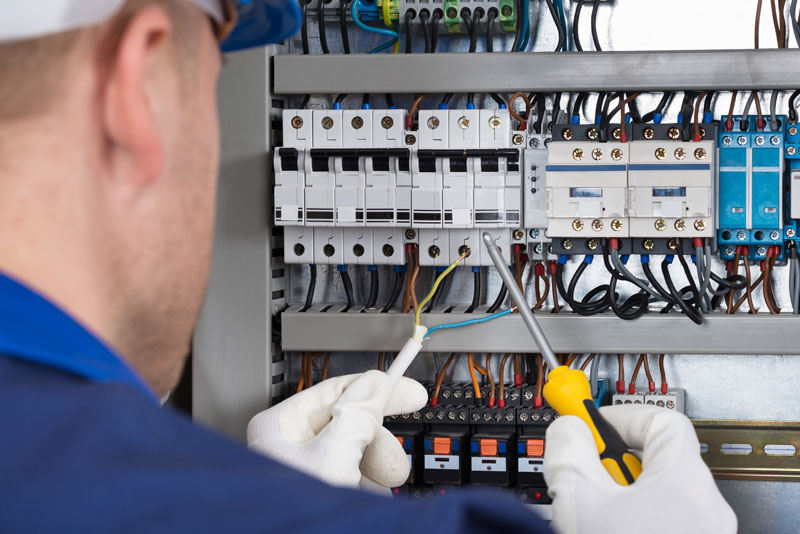Count On BRE Electrical Melbourne for High-Quality Electrical Services
Count On BRE Electrical Melbourne for High-Quality Electrical Services
Blog Article
The Ultimate Guide to Electrical Setup: Tips and Techniques for a Safe and Efficient Home Electrical Wiring System
In the realm of home maintenance, few aspects are as vital yet commonly forgotten as the electrical circuitry system. By discovering the subtleties of electrical safety and security actions and energy-saving practices, this extensive guide will shed light on the ins and outs of home circuitry, equipping people to take charge of their home's electrical facilities.
Comprehending Electric Security Procedures
To ensure the safety of both individuals and building, understanding and executing appropriate electrical security steps is paramount in any kind of home circuitry task. Power is a powerful force that can be unsafe otherwise handled with caution. One of the essential safety and security actions is making certain that all electrical job is performed by certified professionals that comply with local building codes and laws. It is critical to perform a thorough examination of the electrical system prior to beginning any kind of electrical wiring job to recognize prospective risks or issues that need to be addressed.
Furthermore, using the suitable devices and equipment is necessary for preserving safety and security during electric installations. Insulated handwear covers, voltage testers, and protective eyeglasses are several of the fundamental security equipment that must be put on to avoid electric shocks or crashes. It is also essential to de-energize circuits prior to servicing them and to classify all circuits and breakers clearly to avoid complication.

Vital Devices for Home Electrical Wiring
Guaranteeing the proper execution of electric security measures in home circuitry projects entails making use of a particular set of important devices developed to help with the installment procedure successfully and safely. Several of the key devices required for home electrical wiring projects include a voltage tester for checking real-time wires, wire strippers for getting rid of insulation from cables, a cable cutter for precisely reducing cables to length, a screwdriver established for safeguarding electric elements, electric tape for insulation and safeguarding connections, a wire ripper for stripping cable television sheathing, and a multimeter for measuring voltage, current, and resistance. In addition, a drill with little bits is crucial for producing holes for circuitry and placing electric boxes, while fish tapes or poles help in drawing cables through avenues or walls. It is essential to invest in top notch devices to guarantee precision, effectiveness, and safety and security during home electrical wiring projects. By having the needed tools readily available, property owners can effectively navigate the installment procedure and keep a safe and secure electrical system within their homes - BRE Services.
Step-by-Step Electrical Installment Overview
Beginning an electrical installation task calls for thorough preparation and adherence to safety standards. Prior to beginning any type of work, guarantee you have an in-depth plan outlining the format of the electric system, consisting of the placement of electrical outlets, switches, and fixtures. Take right into account the power requirements of each tool to determine the suitable cable gauge and breaker dimensions.
The initial step in the installment process is to turn off the power supply to the location where you will certainly be functioning. Use a voltage tester to verify that the circuits are de-energized prior to touching any type of cords. Next off, thoroughly remove existing fixtures or outlets and separate the cords.
When installing brand-new electrical wiring, run cables with wall surfaces and ceilings, securing them in place with suitable installations. Adhere to regional building regulations hop over to here and maker guidelines for proper wire installation and connections. BRE Electrical Melbourne. See to it to identify wires for easy recognition and future upkeep

Troubleshooting Common Wiring Issues
Having actually completed the setup process as laid out in the previous subtopic, fixing common wiring problems is an important ability for making certain the safety and functionality of Discover More your electric system. One common issue is a tripped circuit breaker, commonly triggered by overloaded circuits or a brief circuit. To repair this, locate the breaker panel, determine the stumbled breaker by trying to find the one not totally in the "on" setting, and reset it by turning it fully to "off" and afterwards back to "on." Another widespread issue is a damaged electrical outlet, identified by no power or recurring power supply. Guarantee the outlet is not controlled by a button, after that use a voltage tester to inspect for power. If there is no power, shut off the circuit, examine the circuitry connections for any loosened or broken cords, and change the electrical outlet if needed. Continually flickering lights can show loosened electrical wiring connections or an overloaded circuit. To resolve this, check and tighten all cord connections in the influenced fixtures and buttons and rearrange the load on the circuit to balance the electric need. Consistently inspecting and quickly attending to these common electrical wiring issues will certainly maintain the safety and effectiveness of your home electrical system.
Tips for Energy-Efficient Electrical Equipments
For optimal energy effectiveness in electrical systems, implementing clever methods and utilizing energy-saving innovations is critical. One key tip for accomplishing an energy-efficient electrical system is to update to LED illumination. Appropriate insulation and sealing of home windows, doors, and electric outlets can additionally avoid energy loss, inevitably decreasing the work on electric systems.
Conclusion
Finally, applying appropriate safety and security procedures, utilizing essential devices, complying with a step-by-step installation guide, repairing common concerns, and including energy-efficient suggestions are critical for a safe and reliable home electrical wiring system. By adhering to these techniques, property owners can make sure the longevity and functionality of their electrical Continue installations. It is necessary to focus on safety and efficiency when it concerns electric work in order to protect against possible dangers and to keep a dependable electrical system in the home.
Report this page